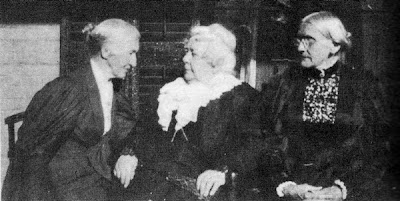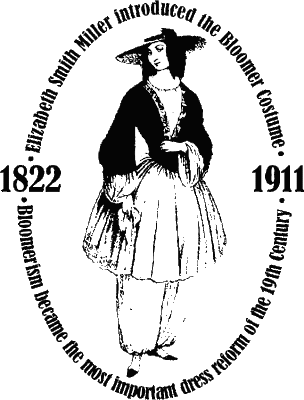 Though war was “no place for a woman,” many New York state women during the Civil War set off from their homes to nurse the sick and wounded. One of the projects sponsored by the Tompkins County Civil War Commission is to honor women from the county who went to war.
Though war was “no place for a woman,” many New York state women during the Civil War set off from their homes to nurse the sick and wounded. One of the projects sponsored by the Tompkins County Civil War Commission is to honor women from the county who went to war.
The Army set regulations for nurses. They were to be women between the ages of 35 and 50- they needed to be persons of experience, good conduct, superior education, serious disposition and good health. They were to be neat, orderly, sober, industrious and be willing to travel with a small amount of luggage. Their dress was to be plain, brown, gray or black, with no ornaments. They would be paid 40 cents a day or $12 a month in addition to food, housing, and transportation.
Not all women who nursed met these standards and most encountered mistrust from a number of quarters, including doctors and quartermasters and by the public who feared they might be more “temptress than nurse.” The sick and wounded, however, appreciated their presence and one reportedly said to a nurse, You are the “God-Blessedist Woman I ever saw.”
Among the first to go to war was Susan Emily Hall who enlisted as a nurse in April 1861. Hall, born in 1826, moved with her family to a farm in the Town of Ulysses where she grew up, one of a number of children. She stayed at home and cared for her parents in their old age but when both had died, she set off to New York City to study medicine with Dr. Elizabeth Blackwell. After the firing on Fort Sumter, Blackwell called for nurses and urged her students to enlist. Georgeanna Woolsey reported that two groups attended classes at New York Hospital where they learned “how to make beds for the wounded, cook food properly for the sick, wash and dress wounds, and others things as they come along.”
In July, Dorothea Dix called Hall and Dada, who came from Syracuse, to Washington. Dada has left a diary account of their experiences- both women served to the end of the conflict. Hall returned to New York state in the spring, her health strained- Dada remained in service until the fall of 1865.
Sarah Graham Palmer, a widow of 30 with two children, left in 1862 following the great enlistment of that summer to accompany her brothers who had enlisted in the NY 109th Volunteers. She commented that it was “something to brave popular opinion, something to bear the sneers of those who loved their ease better than their country’s heroes, and who could sit down in peace and comfort at home, while a soldier’s rations, and a soldier’s ten for months and years made up the sum of our luxurious life.” [Aunt Becky’s Army Life (1867), page 2.] Palmer, who became known as “Aunt Becky” by the troops, returned to Ithaca in 1865 where she married and emigrated to Iowa.
Sophronia Bucklin of Cayuga County also went to war in 1862 and served under the direction of Dix, working at a variety of military hospitals. She lived out the rest of her days in Ithaca. She too left a memoir of her experiences titled In Hospital and Camp: A Woman’s Record of Thrilling Incidents Among the Wounded in the Late War (1869).
Julia Cook heard of the need for nurses in the spring of 1864. Her husband had died in the war and her son had been wounded in battle but continued with his regiment. Cook went to Washington and began nursing but she soon fell ill and was sent home to Dryden.
Cook and Bucklin are buried in Tompkins County- Hall in California, Palmer in Iowa. These women were little honored in their lifetime- a flag pole was erected over Aunt Becky’s grave in DeMoines in 2009. It seems fitting that we remember them today as we commemorate the 150th anniversary of the Civil War.
By action of the Tompkins County Civil War Commission and the TC3 Foundation a fund was created to honor these women and provide aid to nursing students at Tompkins Cortland Community College in Dryden, New York. These will be named for Susan Emily Hall, Julia Cook, and Sarah Graham Palmer. A faculty enrichment grant will be named for Sophronia Bucklin. Donations to the Civil War Nurses Fund have come from all around the country.
Nurses came from all over the state. I have been collecting the names of women from New York who served and would be glad to post that list and add names of others to it.
Illustration: “The Dying Soldier – The Last Letter From Home” by F. O. C. Darley, as it appeared in Mary A. Livermore’s My Story of the War (1888).
Carol Kammen is Tompkins County Historian, a Senior Lecturer at Cornell University, and the author of several books, including On Doing Local History: Reflections on What Local Historians Do, Why, and What It Means and The Peopling of Tompkins County: A Social History.
 “Newspaper Fiction: The New York Journalism of Djuna Barnes, 1913-1919,” an exhibition of 45 objects including drawings, works on paper, documentary photographs, and stories in newsprint by the celebrated writer and early twentieth-century advocate for women’s rights Djuna Barnes (American, 1892-1982), will be presented in the Herstory Gallery of the Brooklyn Museum’s Elizabeth A. Sackler Center for Feminist Art from January 20 through October 28, 2012. Among the works on view will be eight illustrations Barnes composed to accompany her newspaper columns.
“Newspaper Fiction: The New York Journalism of Djuna Barnes, 1913-1919,” an exhibition of 45 objects including drawings, works on paper, documentary photographs, and stories in newsprint by the celebrated writer and early twentieth-century advocate for women’s rights Djuna Barnes (American, 1892-1982), will be presented in the Herstory Gallery of the Brooklyn Museum’s Elizabeth A. Sackler Center for Feminist Art from January 20 through October 28, 2012. Among the works on view will be eight illustrations Barnes composed to accompany her newspaper columns.







